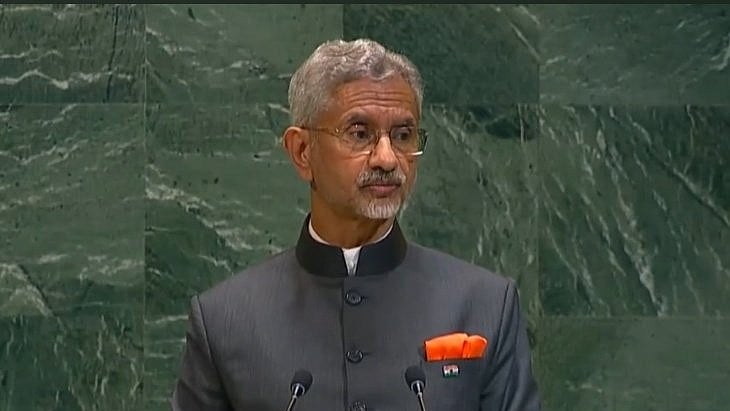In his Independence Day speech, Prime Minister Narendra Modi raised serious concerns about India’s population growth, linking the idea of small families with patriotism. The prime minister’s reference to rising population as a cause for worry for social and economic reasons cannot be disputed. But his statement that “we need to worry about population explosion” raises undue alarm bells. Not only was the statement not supported by data, it also gives an unexpected twist to the prevailing discourse on demographics. The benefits of small families and an educated and skilled population are beyond any doubt. But holding small families as role models of patriotic expression gives a different and undesired spin to the problem, which needs to be tackled without breaching democratic rights and autonomous choices.
Over the last two decades, India’s population has been seen as an asset because of the demographic dividend it could bring to India’s economic growth. However, the prime minister seems to view the country’s population only as a problem rather than a benefit of the huge working-age population. This shift in government’s view of dividend-yielding asset to liability cannot be seen in isolation; it needs to be seen in the wider socio-political discourse and undue fear mongering. In the last session of parliament, Rakesh Sinha, a BJP MP in the Rajya Sabha, introduced the ‘Population Regulation Bill, 2019’ on July 12. The private member’s bill calls for punitive action against people with more than two living children and making them devoid of all government services.
According to public health experts, the proposed bill will not only impact the poorest and marginalised sections of the population in various ways but also worsen their impoverishment. Such “misguided” proposals and “misreading” of India’s demographic trajectory, health experts say, could result in a setback to population stabilisation efforts. While India’s population remains a concern, “population explosion” might be an exaggeration. Although population continues to grow, the pace of net addition is slowing down. India’s population grew by 17.64 per cent in the last decade. This was the first time since 1911-1921 when net addition to population was lower than previous decades.
According to Census 2011, India’s annual population growth between 2001 and 2011 was 1.64 per cent. World Bank data also shows that the growth rate decreased from 1.73 per cent in 2001 to 1.04 per cent in 2018. According to Economic Survey 2018-19, the annual growth in population was 1.3 per cent between 2011 and 2016.
Population growth rate is quantified by using total fertility rate (TFR) and annual population growth rate. TFR can be described as the number of children that a woman can be expected to have in her lifetime. The desired value for TFR is 2.1 (children), at which a population reaches a replacement level of fertility. India’s TFR, according to National Family Health Survey (NFHS), was 2.2 in 2016; it fell from 3.1 children in 2001 to 2.2 in 2011.
This is just slightly more than the replacement level of 2.1 children. So, is there a population explosion in India? Estimates based on Census data predict that India will reach a TFR of 2.1 in 2021. Although achieving population stability by 2045, the target set under National Population Policy of 2000, will be a challenge, fertility trends show that India is at an inflection point. NFHS data, which is used by government for policymaking, shows that in 2016 the TFR for rural areas was 2.4 (children) and 1.8 for urban areas. Eighteen states and five union territories had a TFR of 2.1 or less in 2016. Only seven states – Assam, Bihar, Chhattisgarh, Jharkhand, Madhya Pradesh, Rajasthan and Uttar Pradesh – had a TFR above the national average. This means the population problem is more in the Hindi heartland states, while most of the other states are already at or below the replacement fertility levels.
According to Economic survey of 2018, the ‘son meta preference’ – desire to have a male child – has resulted in 21 million “unwanted” girls in India. Such gender preferences not only contribute to the growth of population but also trigger malpractices of female foeticide, besides violating women’s reproductive rights. Gender norms in a patriarchal society like India enforce economic responsibilities on men and reproductive responsibilities on women. This is reflected in how family planning measures are employed in India – heavily skewed towards female sterilisation. Not only are there social and gender biases towards family planning, but the mindset of most people is that family planning is the responsibility of a woman.
The wanted fertility rate, according to women interviewed for NFHS 2015-16, was 1.8. This means most women did not want to have more than two children. Thirty-nine million married women in the age group of 15-49 years also wished to delay or avoid pregnancy. However, they did not have access to contraceptives. This means people are willing to change their attitude. Thus instead of blaming people for India’s population problem, the government needs to step in and encourage people to adopt family planning. However, the government is not doing enough to prioritise it: the outlay for family planning has remained unchanged at 4 per cent (Rs 577 crore) of the National Health Mission budget since 2014-15, of which 85 per cent is spent on female sterilisation alone.
India was the first country in the world to launch a state-sponsored programme for family planning in 1951, when the country’s population was 36 crores; today, it is around 130 crores. Obviously, the efforts for population control have not given desired results. So, what can the government do now? It has to focus on making quality education available to all children, ensure affordable healthcare, provide access to contraceptives and increase job opportunities. There is an inverse relationship between school enrolment and adolescent fertility rate. According to World Bank data, adolescent fertility rate has declined worldwide from 65 births per 1,000 adolescent girls in 1990 to 44 births in 2017. This decline is strongly associated with an increase in secondary school enrolment of girls. This relationship is even more pronounced in regions with higher rates of adolescent fertility in 1990, such as Sub-Saharan Africa and South Asia. Instead of coercive measures, educating and empowering the girl child is one of the effective ways of controlling population.
The writer is an independent Mumbai-based senior journalist.





